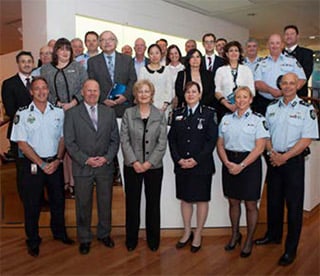Our Capacity
Capacity is having the right quantity and quality of resources to respond to current and emerging requirements and threats. People and money are the two dominant resources and it is our responsibility to make the best use of these to meet our objectives.
Our People

Policing is a people-centred profession. People are our greatest strength and our results reflect the hard work and dedication that all our staff put in every day. But as our operating environment evolves, so too should our workforce. To maintain and increase our operational success, the AFP will need to have an adaptable workforce.
This is why we focus on delivering a sustainable and adaptable workforce with ‘the right person, with the right skills, in the right role, at the right time’ and to link our capability and capacity with AFP operations.
In 2015–16 the total AFP forecast average staffing level is 6,2875; 5,321 in Outcome 1 and 966 in Outcome 2 across both domestic and international operations. We have an integrated staffing model that appreciates diversity on all fronts. We meet our needs by having a mix of sworn police, protective security officers, and specialist and support staff; males and females; and from diverse backgrounds.
Our Budget
The AFP total funding for 2015-16 is $1.38 billion6 (including Outcome 2). The majority ($1.12b) of AFP’s operating income comes directly from government appropriations. However, the AFP also generates approximately 19 per cent of its income from other sources, including provision of protective security services to critical infrastructure sites and establishments of interest to the Commonwealth, policing services to ACT Government, and national police checks.
To ensure the AFP is efficient, we will continue to eliminate duplication, reduce supplier costs and identify innovative ways to conduct our business.
A summary of our budget for Outcome 1 Programmes 1.1 and 1.2 for the financial years 2015-16 to 2018-19 is provided on pages 14 and 19.
